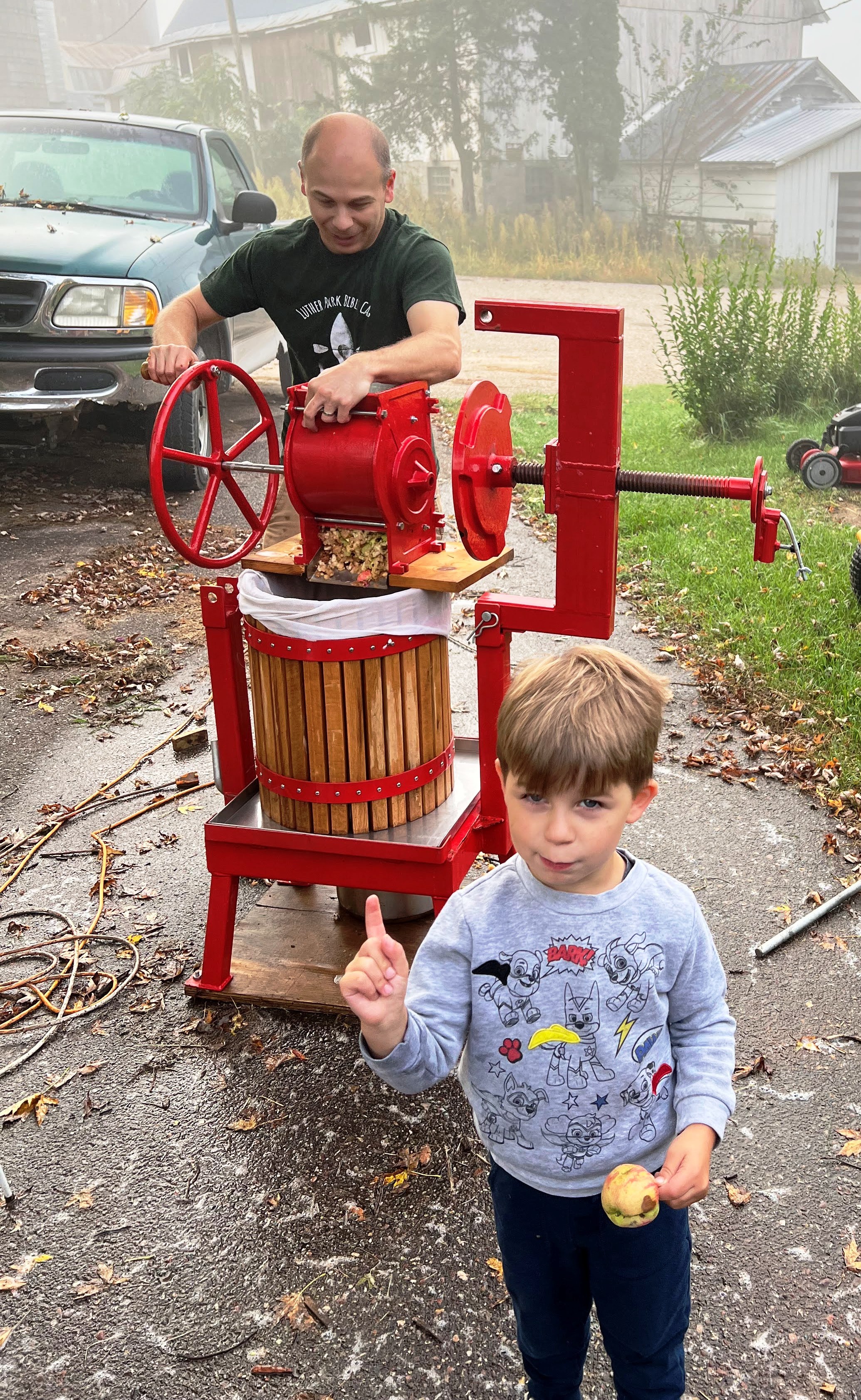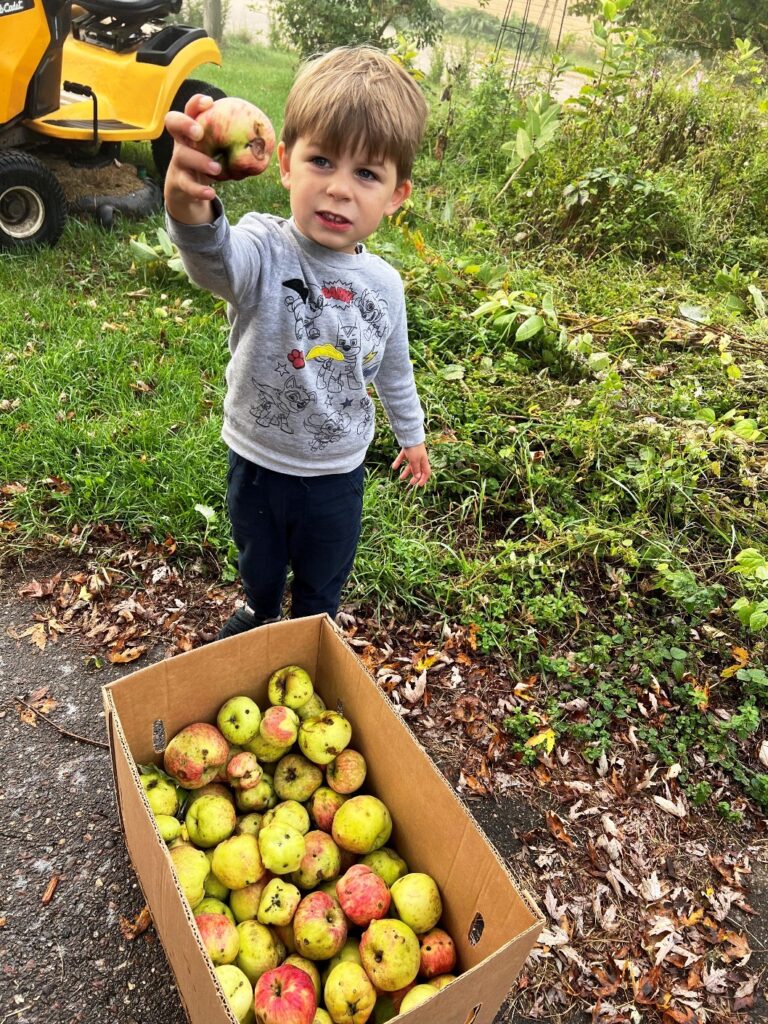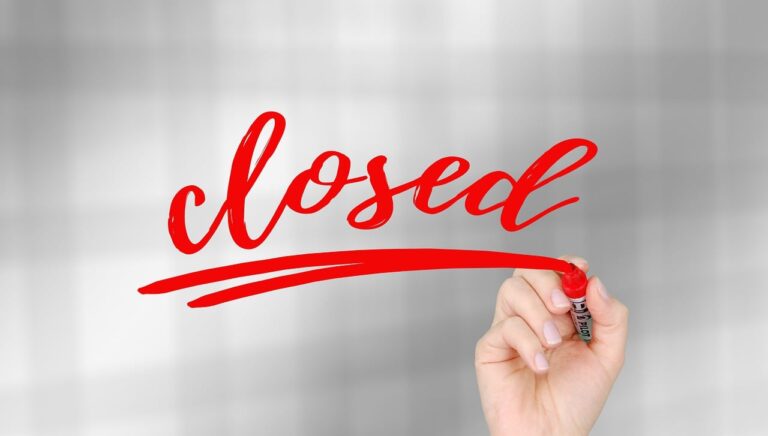Back Home by Chris Hardie
- Download this column as a Word document
- Download the photos that accompany this story
- Chris Hardie’s headshot

It’s apple harvest season with community festivals celebrating the fruit and many commercial orchards open for picking and family fun.
While we have never grown apples commercially, we have a few mature apple trees that we planted in our yard. There are also dozens of wild apple trees in the woods.
When I was young we’d always pick from the trees located on a hilltop spot on the farm at the edge of the field that was aptly called “The Orchard” by my father. There were about a dozen trees there that survived until the early 1980s. I was never sure if they were planted or if they grew wild.
Having an apple picker is a must when you’re trying to harvest from wild trees. There isn’t going to be any low-hanging fruit when you’re having to compete with deer and cattle that can reach the lower branches.
Our son Ross is an apple enthusiast who enjoys both picking and processing. Each year he and my father picked many of the farm’s wild trees – a tradition they kept up every year until Dad passed in 2020.

They had their favorite trees and knew the ones that would be ripe earlier and the ones that could be harvested later. Some years were better than others, as weather – particularly late spring frosts – impacted the seasons.
Six years ago Ross and I went halves on an apple press. Ross used it once, but it’s been stored in my garage with best intentions of using it every fall but never getting around to it.
Recently Ross and our 3-year-old grandson Samuel came to visit and check out the apple trees. They picked a few dozen apples from a couple of trees. Rather than transporting them to his house, Ross suggested we could press them for cider, an excellent use for wild apples that are far from perfect.
I retrieved the press and set it up on the driveway. Ross washed it up, assembled the parts and he and Samuel started making cider.
The process is pretty simple. You put the apples in the hopper and turn the wheel on the cylinder, which has blades that grind and chop the apples. The pulp then falls into the tub below. You just keep adding apples.

Samuel was a good helper after he was told that apples went into the hopper and not thrown across the yard. By standing on his tippy toes he was just able to reach the top of the hopper.
After the apples were pulped, the pressing plate was cranked down and cider came out of the downspout into a pan.
The difference between cider and juice is that cider is fresh, unfiltered and usually unpasteurized. Apple juice is filtered and pasteurized for a longer shelf life.
The apple crushers turned out about three-quarters of a gallon of cider, which was sweet and tasty.
Samuel will probably not remember that morning, but he loves picking apples with his dad. There will be more memories to come.
But as I watched father and son work together, I had a bittersweet memory about the missing member of the apple team who would have loved it too.
Chris Hardie spent more than 30 years as a reporter, editor



